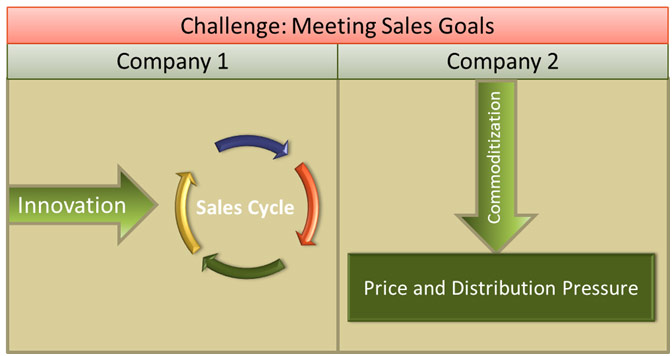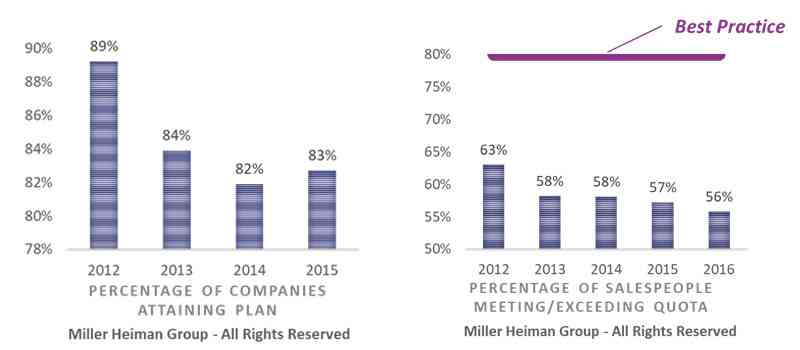Sales, one of the most important functions of any company, is becoming increasingly complex and difficult as customers become more savvy and knowledgeable. The shift in customer power is impacting both B2B and B2C companies. Both types of businesses call for very specific sales organizations to sell to their potential customers. To effectively sell, B2C companies must be nimble and engage directly on multiple levels with their customers, picking and in certain instances, setting trends, creating emotional responses, and driving experiences. B2B companies require a different approach, as they must clearly define the right opportunity, sell to influencers at multiple levels, and manage longer buying cycles. Addressing these realities involves gaining a better understanding market and industry trends, and creating tools, services, and solutions to help other businesses provide greater value to their customers.


A recent Miller Heiman Group study shows a recent and steady decline of sales goal success. The report revealed that 18% of the sampled companies failed to meet their goals, up from 11% just 4 years before.
Almost 1 in 5 companies reported that they are not meeting sales goals of their organization, and 43% of those that miss are missing by more than 10%. Missing sales goals, especially by large margins, creates stress on the organization, and depending on the structure (private or public) and the growth cycle of the industry (early to late), this stress may require price adjustments, adjusting sales deployment strategy, or in dire cases, restructuring of the entire organization.
The specific reasons for missing goals vary, but at the highest level, there are two driving factors: poor plans and poor execution. The first issue is often the result of aggressive senior leadership deriving plans based on the board’s need to meet growth metrics. There is a considerable lack of science employed when setting goals with this type of top-down approach. Sales leaders and sales people often feel that goals are arbitrary and don’t involve the opinions of those responsible for delivering the goals. On the other hand, leaders are fearful that sales people are “sandbagging” or manipulating the compensation plan when applying a bottom-up approach.
The second issue, poor execution, arises from a combination of factors. Firstly, sales leaders are in their positions because they have a bag of tricks that they often pull from to resolve execution issues. However, when addressed in isolation these tactics can be ineffective and fail to address the root cause holistically. The Commercial Sustainability StrategySM includes levers to improve performance that are often overlooked. While some of the individual levers of Commercial Sustainability StrategySM may not appear revolutionary, a sales leader may lack the wherewithal to implement these comprehensive changes successfully.
Written by: Marc Cottle
About the Author: Marc Cottle is an experienced sales leader with 15 years of experience; he is a Principal with McMann & Ransford and leads the Commercial Practice at the company.
